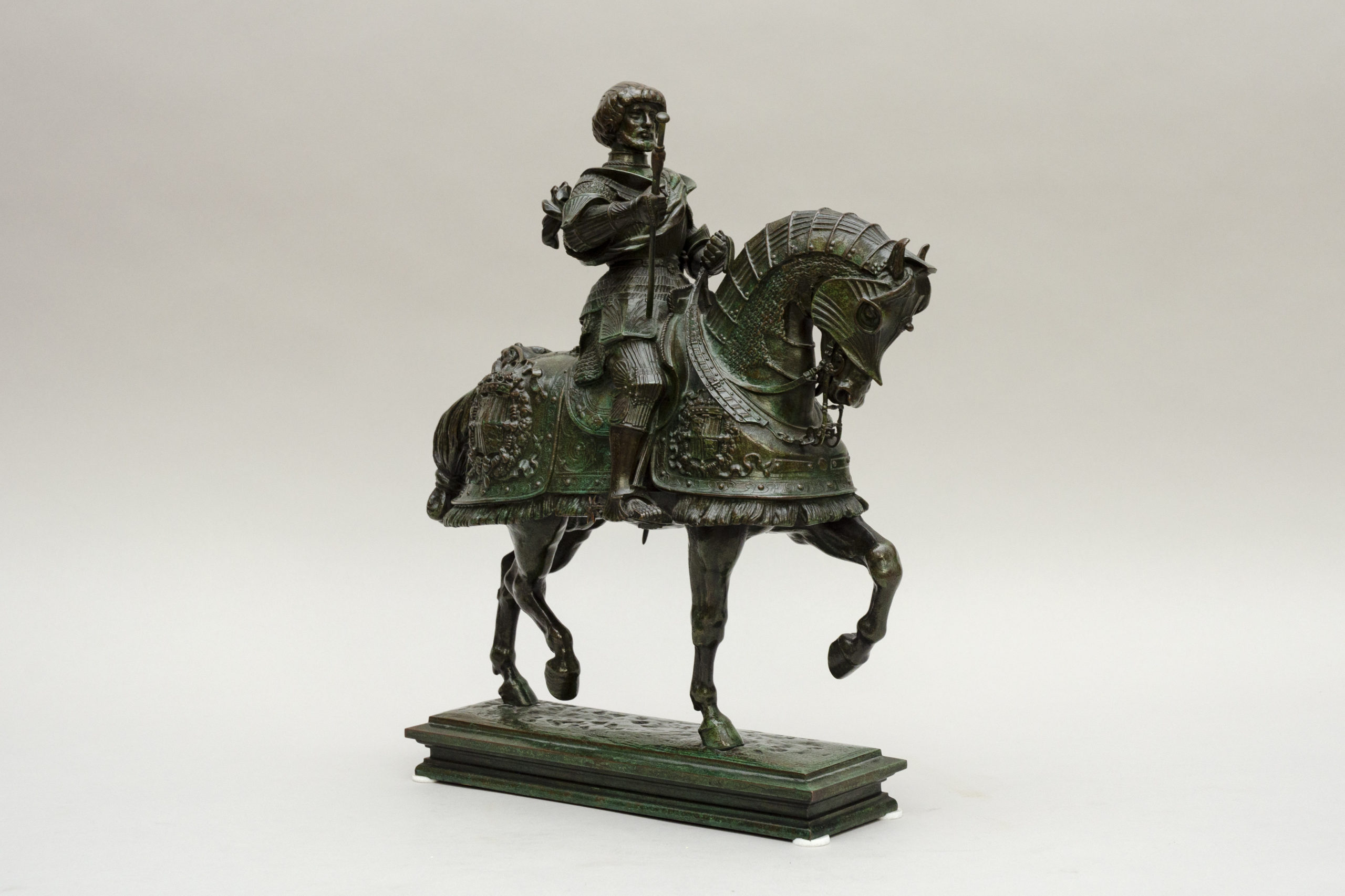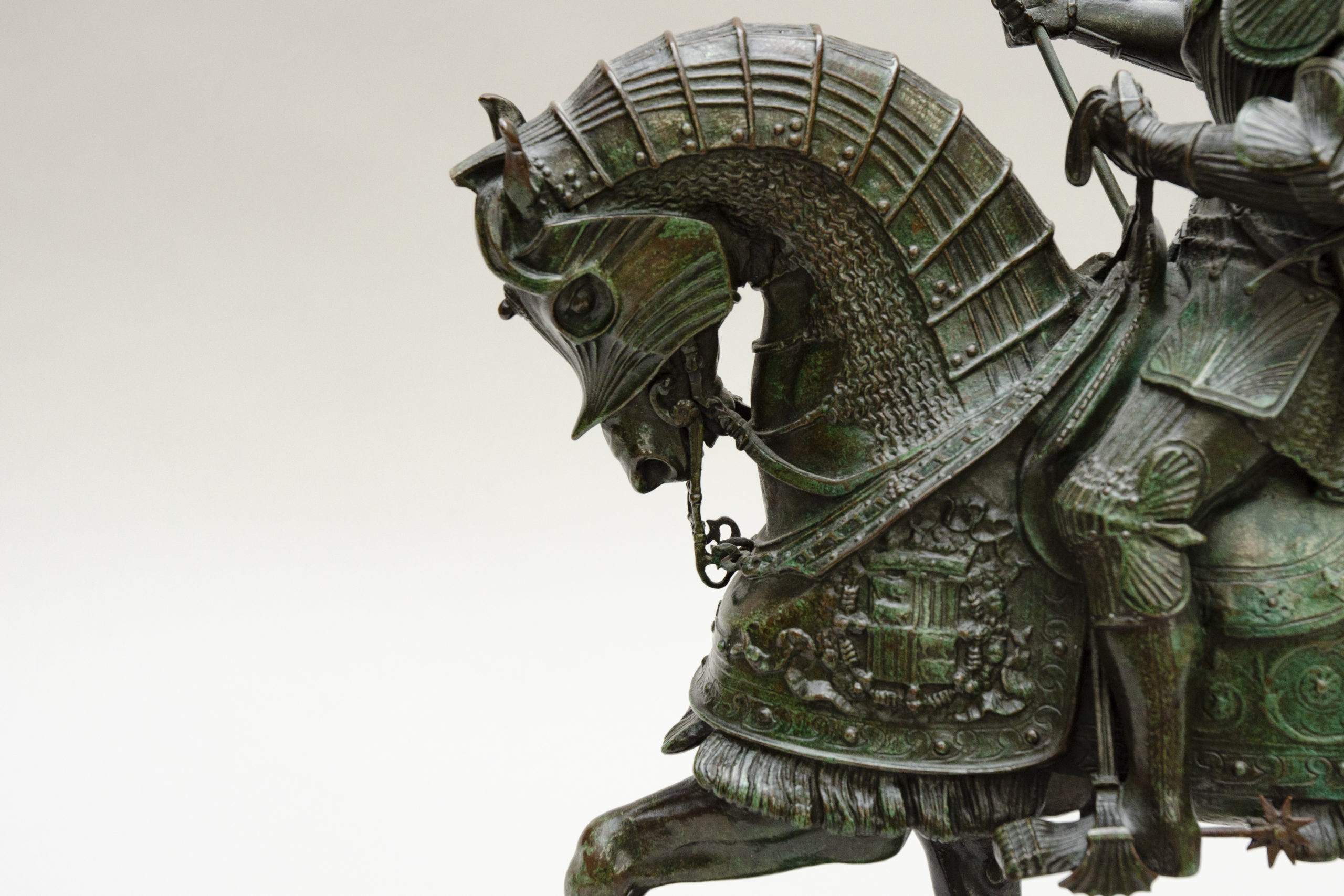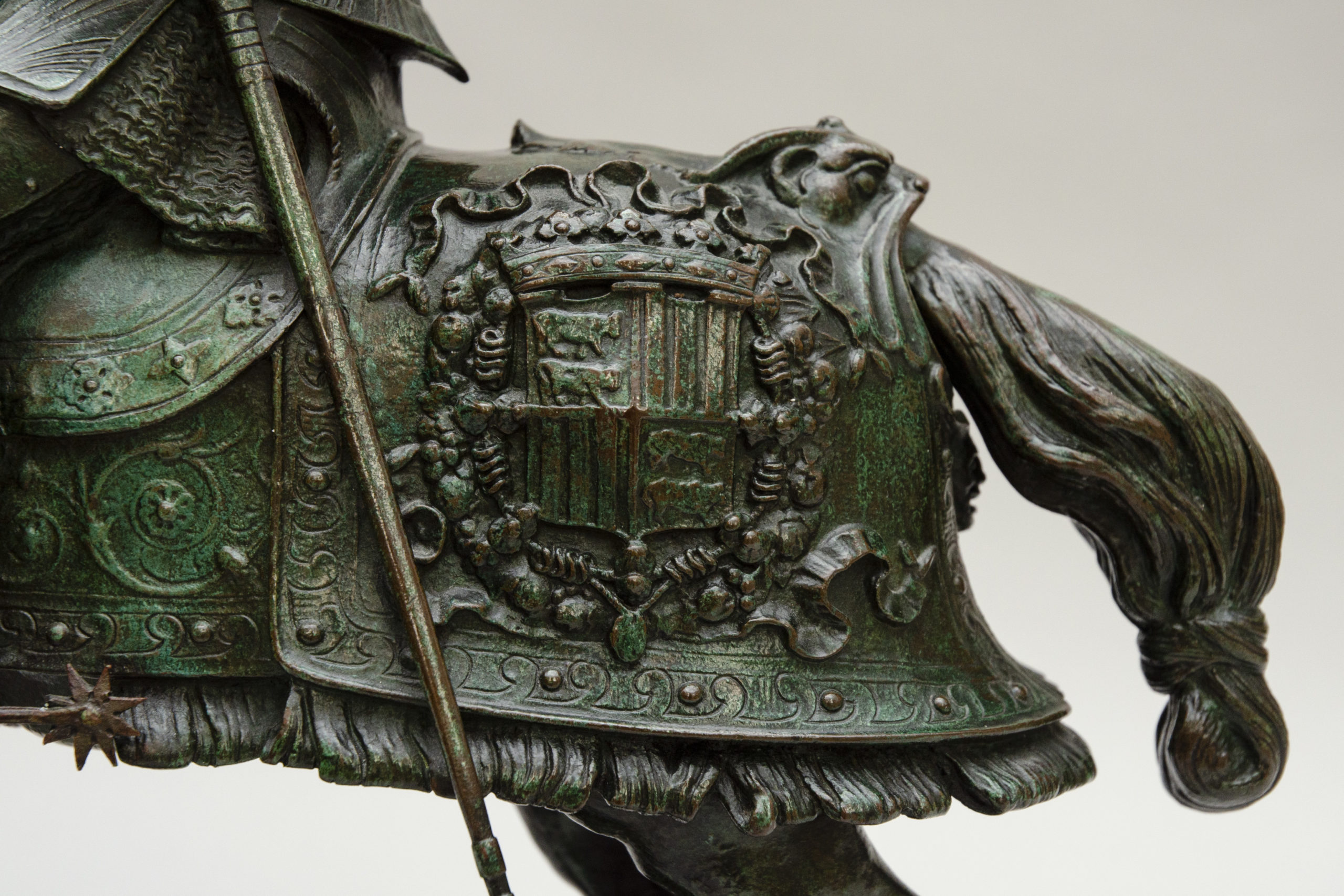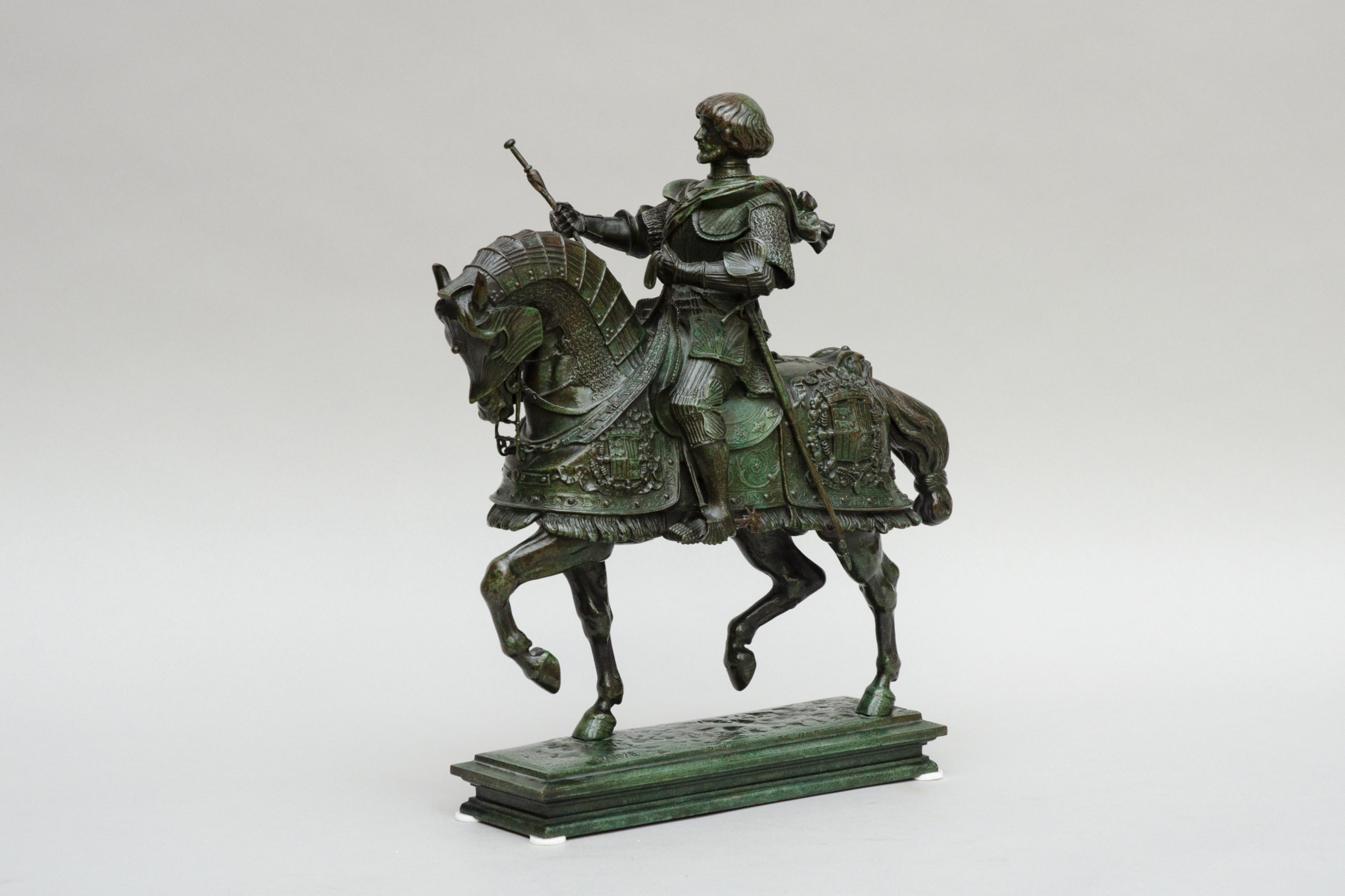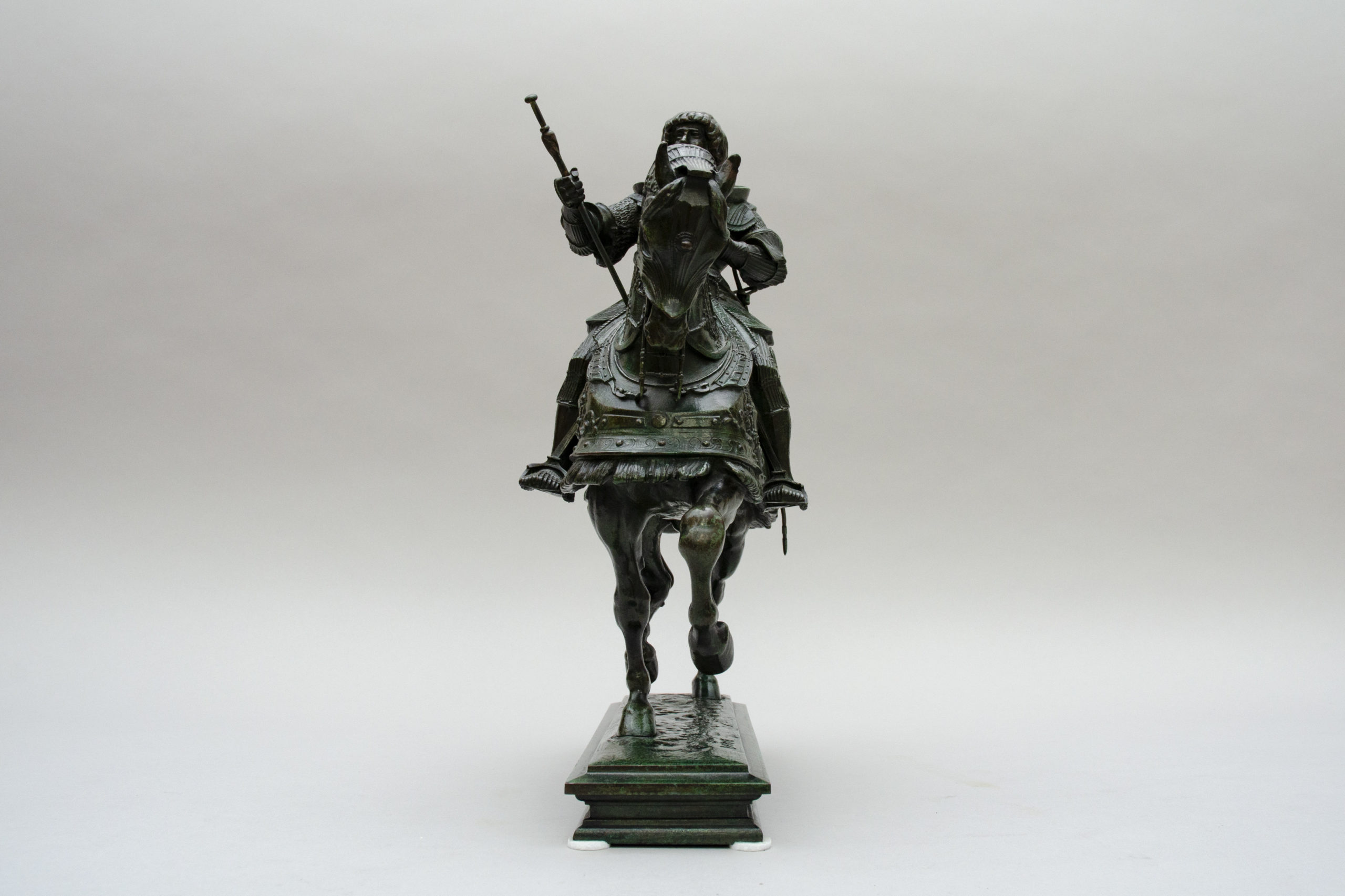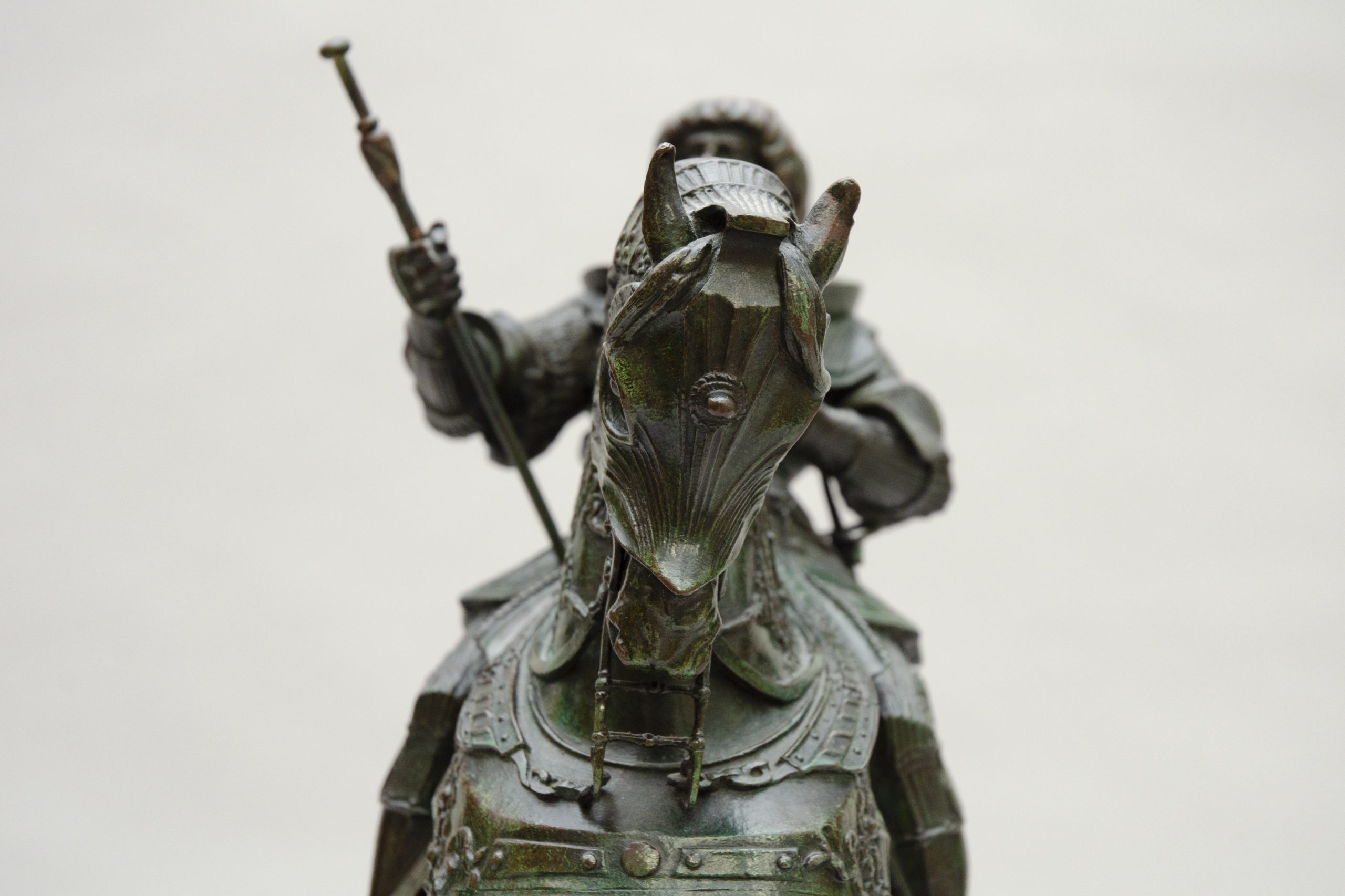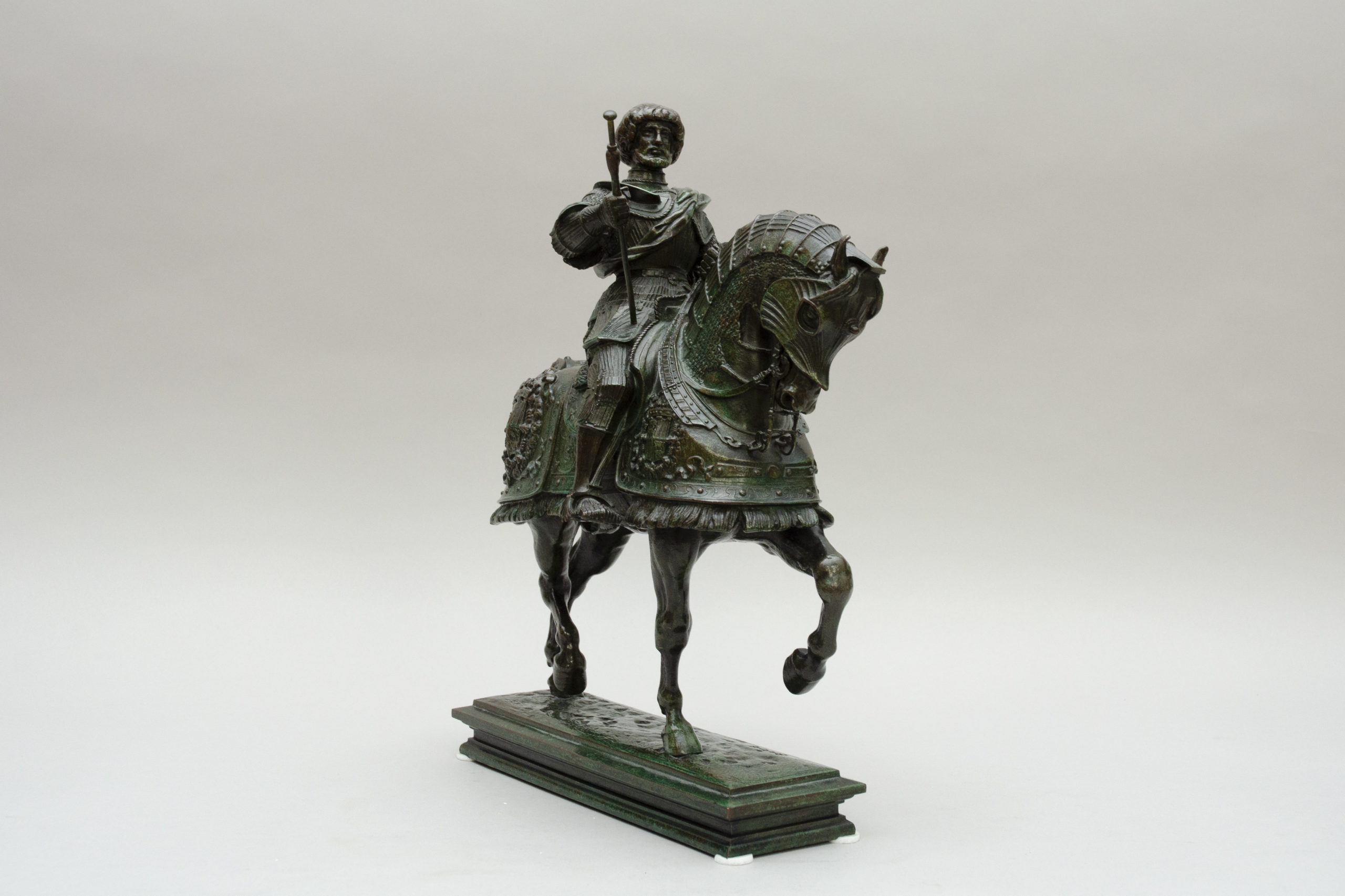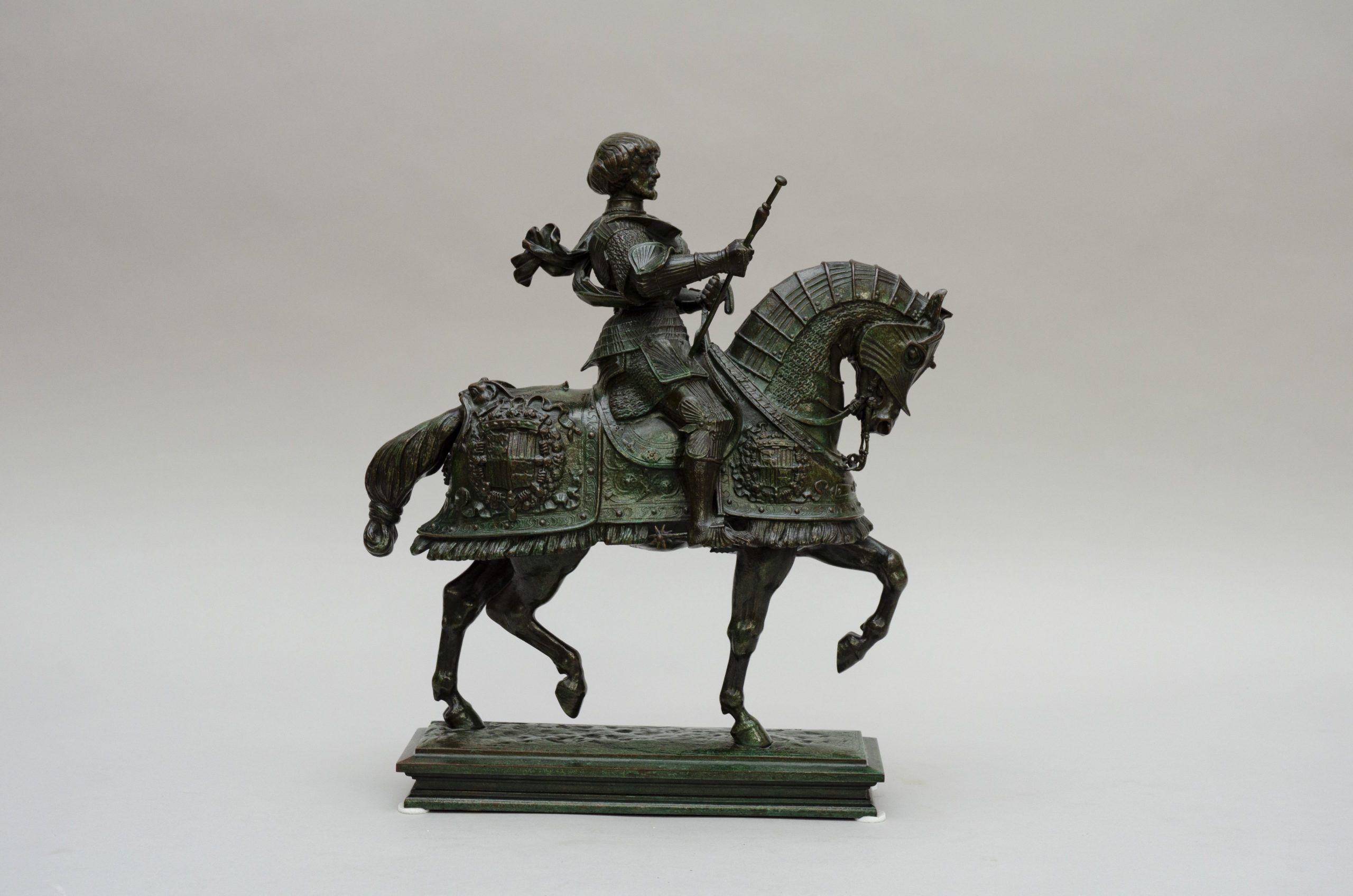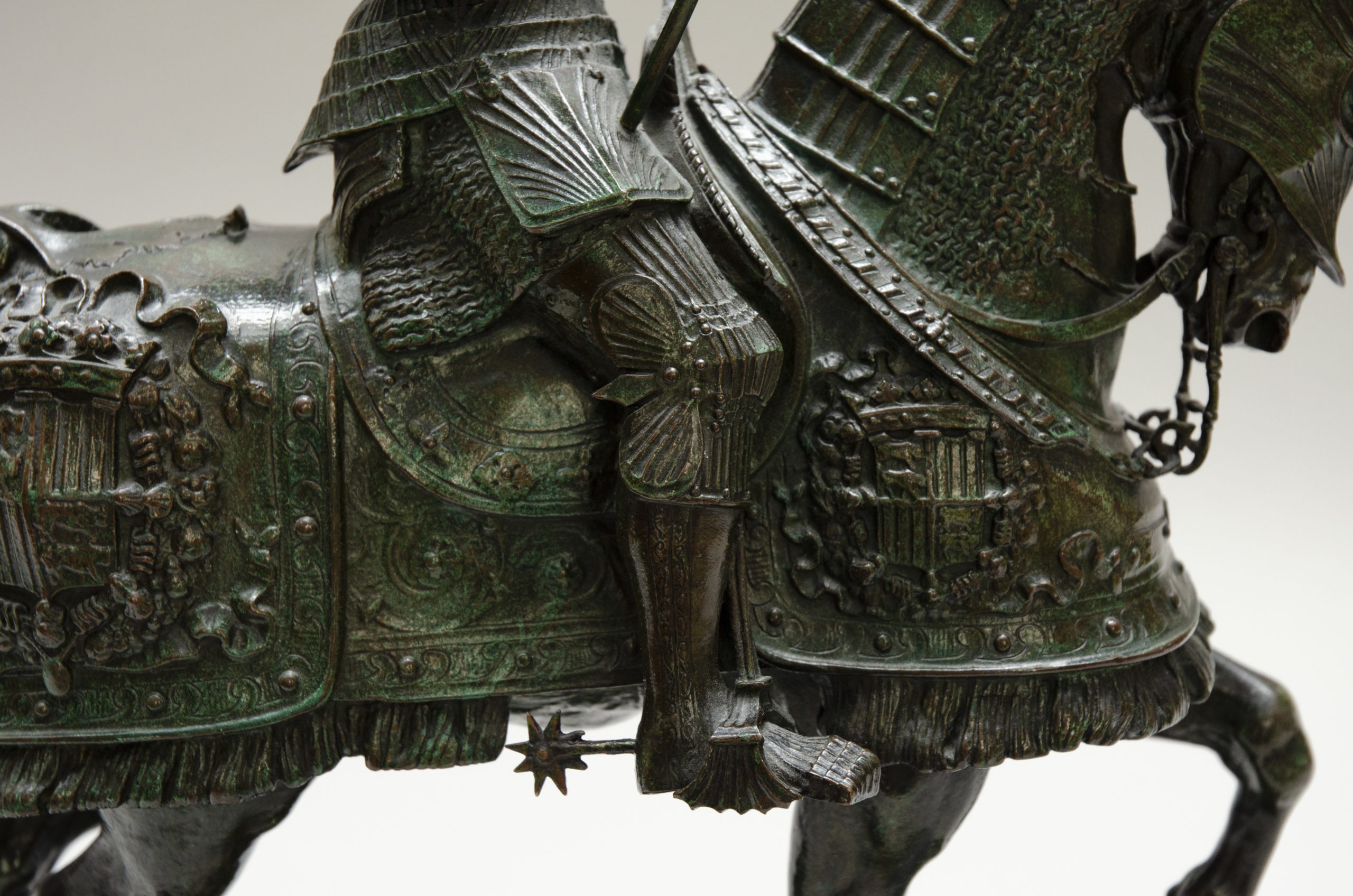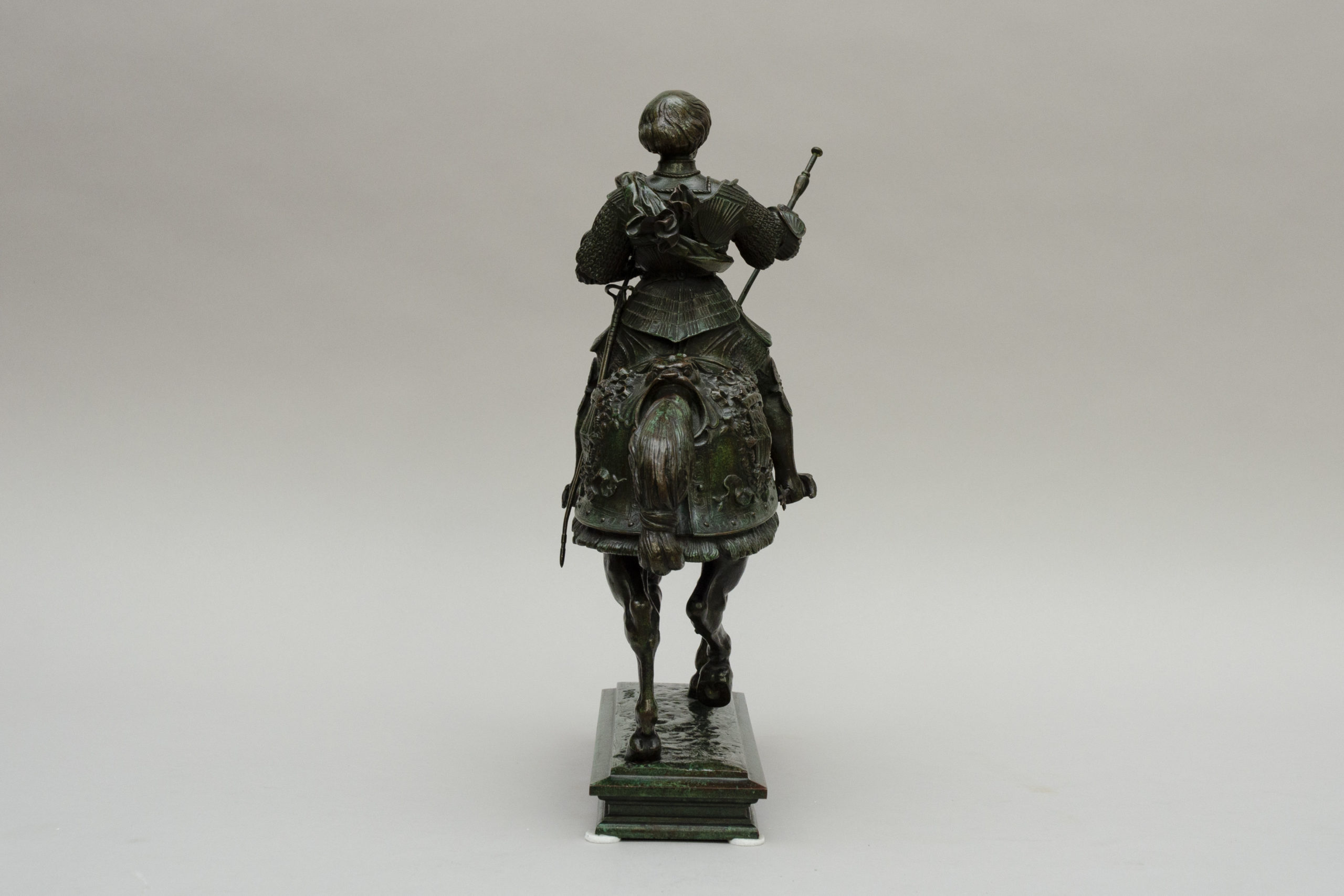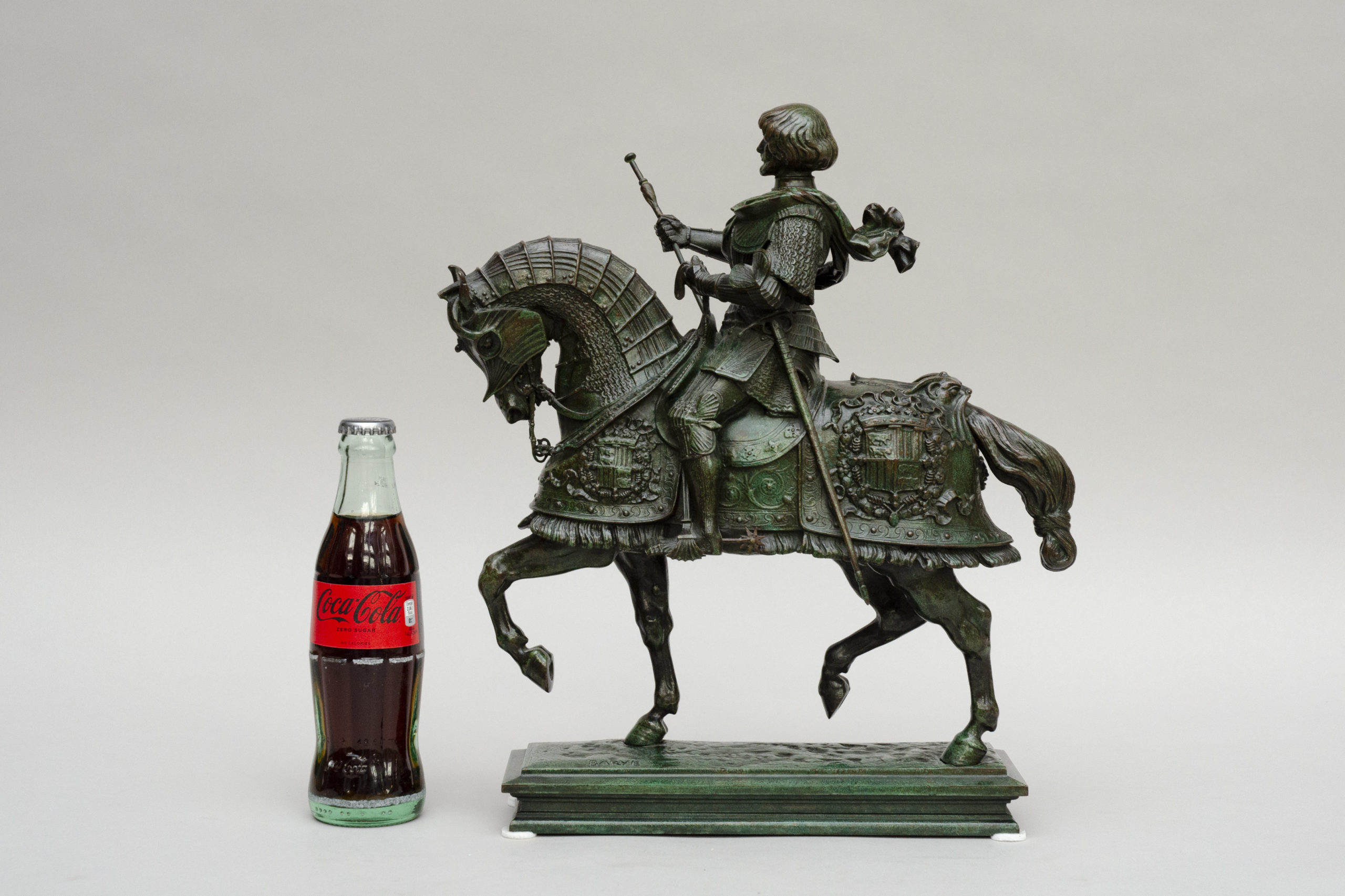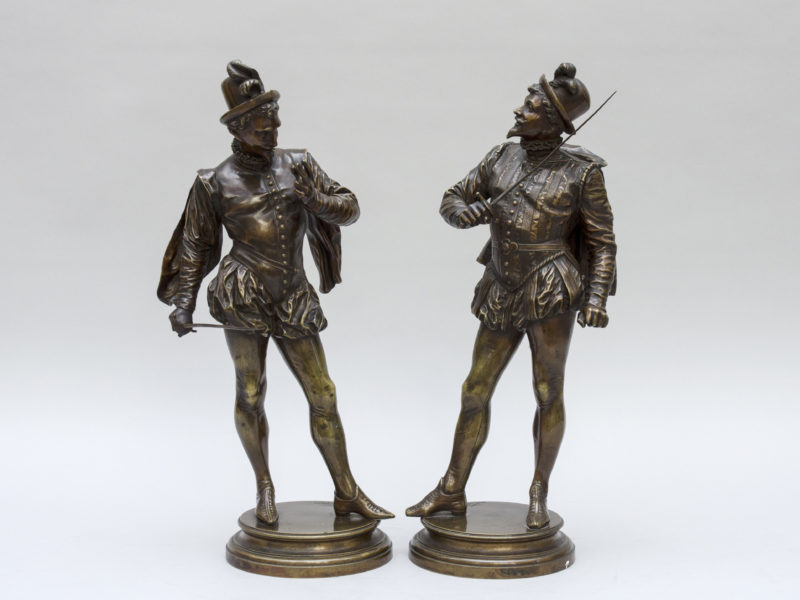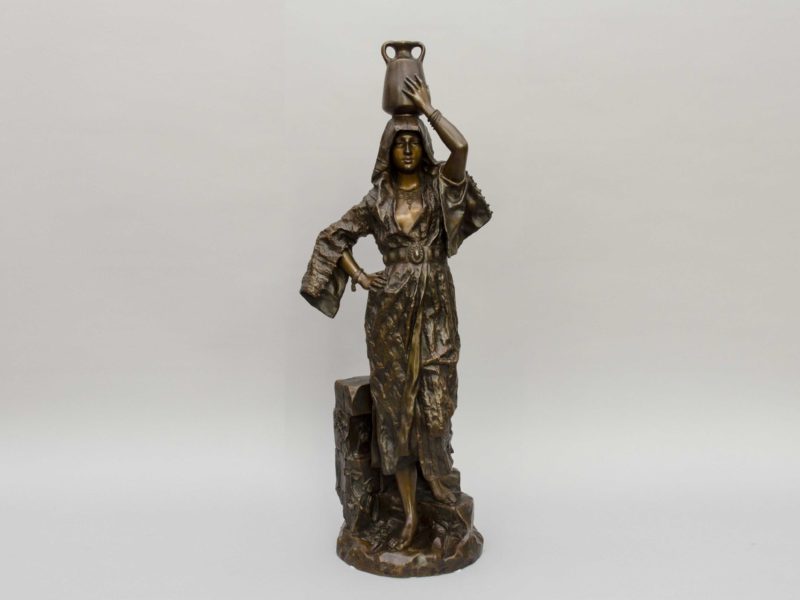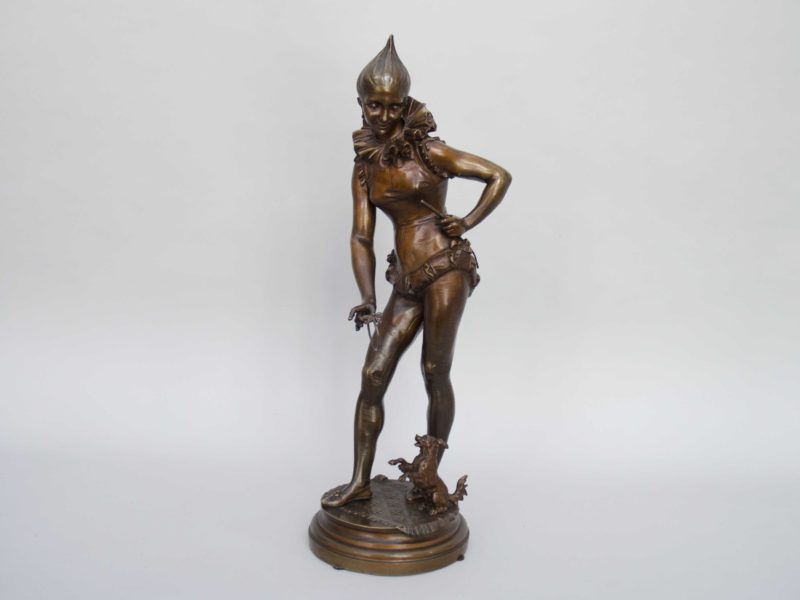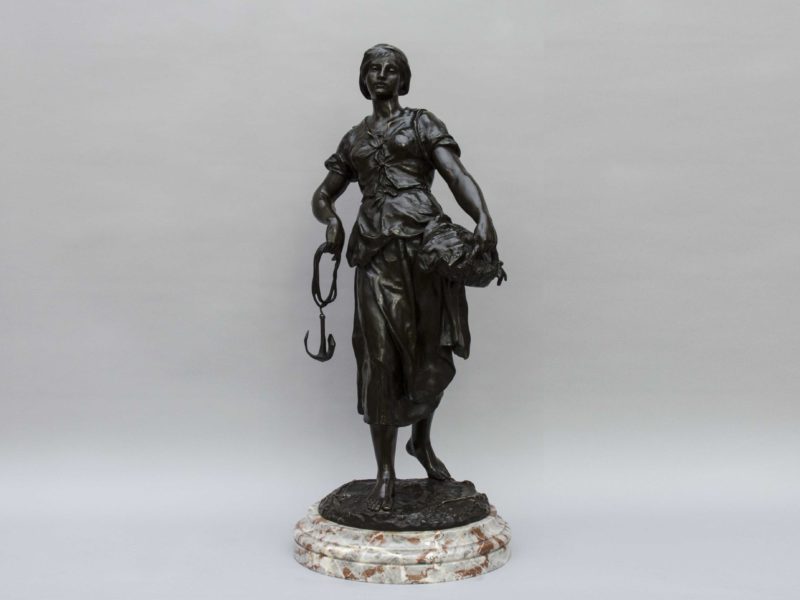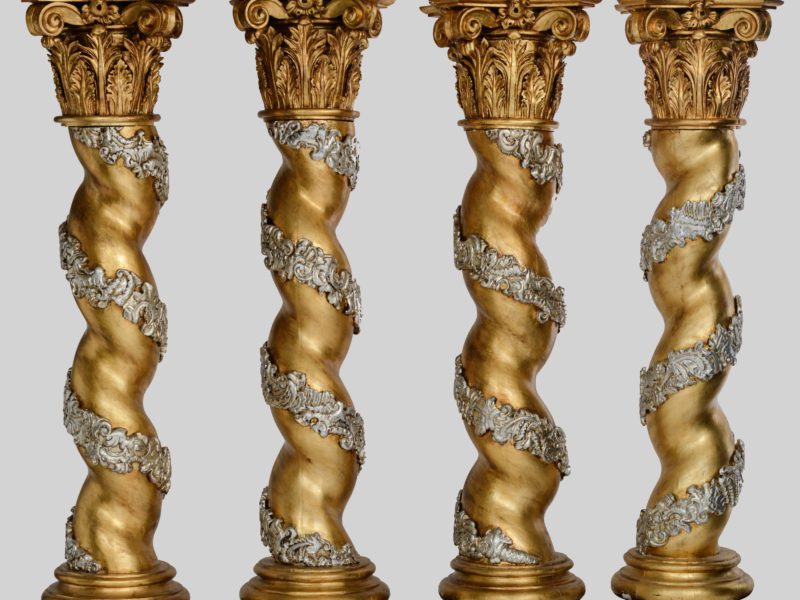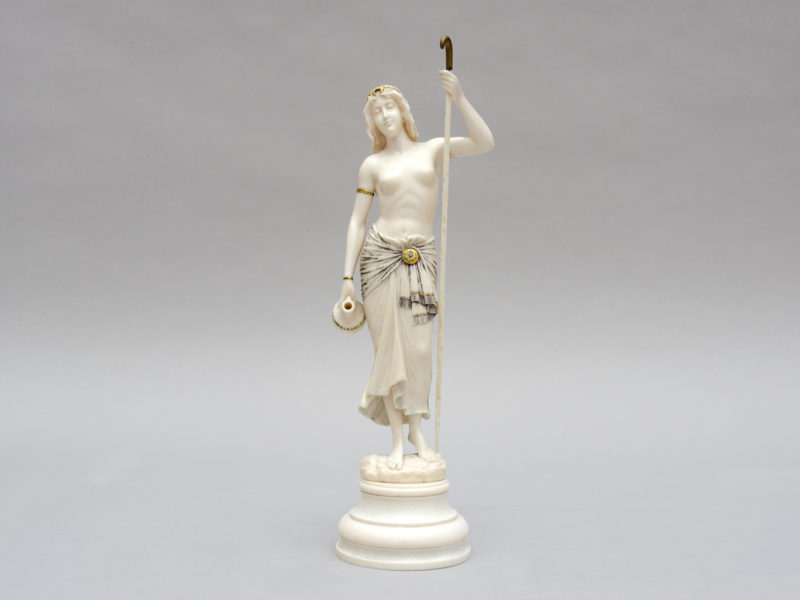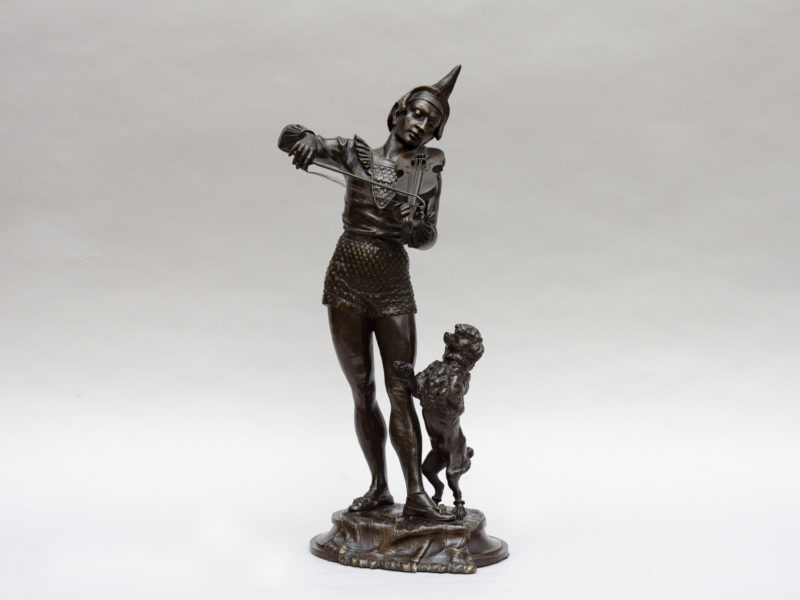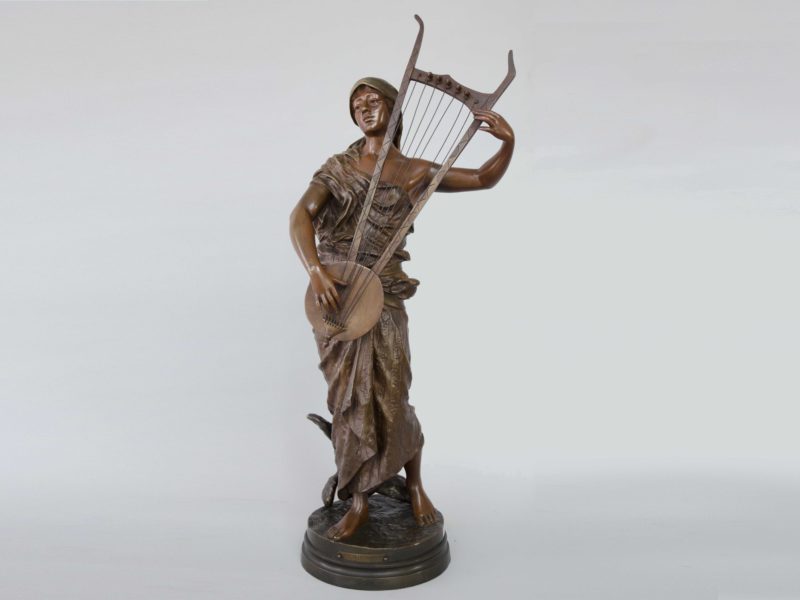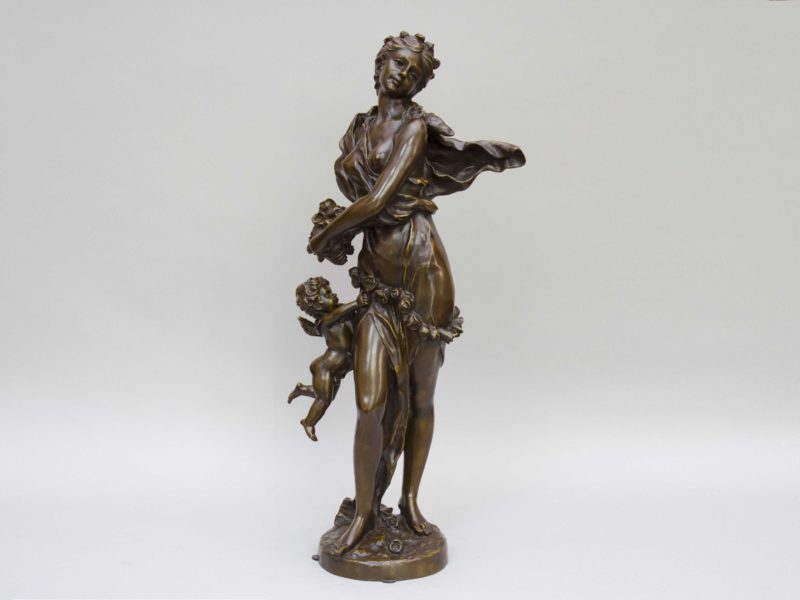
“Gaston de Foix (1489-1512)” by Antoine-Louis Barye
Out of stock
Exquisite bronze of Gaston de Foix, French hero nicknames “Foudre d’Italie” for having fought and won several battles for France against Italy. He is represented on his horse in his armor, his horse elegantly dressed in his coat of arms. Green-brown patina. Signed on the base.
Size: H 35 cm x W 30 cm x D 15 cm – the base is 25 cm x 8 cm
The same bronze is part of the Louvre collection.
Lit: Antoine-Louis Barye, (born 1795, Paris —died 1875, Paris), was a prolific French sculptor, painter, and printmaker whose subject was primarily animals. He is known as the father of the modern Animalier school. The son of a jeweler, he was apprenticed to an engraver of military equipment at about age 13. After serving in the army, he worked for a time in the jewelry trade. In about 1817 he began to sculpt while working in the studio of the sculptor François Bosio. He was also influenced by the Romantic paintings of Théodore Géricault. From 1823 to 1831 he worked with Jacques-Henri Fauconnier, a goldsmith. Barye’s talent for rendering dynamic tension and exact anatomical detail is especially evident in his most famous bronzes, those of wild animals struggling with or devouring their prey.
Barye gradually gained a reputation as a monumental sculptor, with government commissions for images of wild animals in the 1830s, figure groups and portraits for the facade of the Louvre in the 1850s, and freestanding Napoleonic monuments in the 1860s. He first exhibited his bronzes at the Salons of 1827 and 1831, receiving a second prize for his Lion Devouring a Gavial. He withdrew from exhibiting in the Salon in the 1830s after a celebrated small-scale project was rejected as goldsmithery , but he returned in 1850, to great acclaim. Generally speaking, Barye was responsible for improving the status of animal sculpture, a category famous since antiquity, and for demonstrating its suitability as a modern expressive form. He also gained special fame as an artist who, regardless of subject matter, could meld grandeur and artistic refinement with realism in both public monuments and small-scale bronzes for the home at a wide range of prices that the middle class could afford.
Lit: Gaston de Foix, Duke of Nemours, embraced the career of arms at an early age and succeeded his father as governor of Dauphiné at the age of 13. He distinguished himself nine years later, in 1512, during the wars in Italy that pitted the kingdom of France against the Holy League of the king of Spain and the Papal States with the title of general of the armies of his uncle, King Louis XII. This brief and victorious command earned him the nickname “The Lightning of Italy”. He covered himself in glory and surprised everyone with the speed and skill with which he manoeuvred the troops. His skill with weapons and his readiness to use them ensured great victories for Louis XII’s army, including those of Bologna, Mantua and Brescia. It was at the Battle of Ravenna, on 11 April 1512, that he was killed in battle at the age of 22, then at the height of his glory, succumbing to the eighteen wounds he received on his front, emphasizing that he always faced his enemies. A romantic ideal of the gentleman warrior dying by arms, it is as a knight that he is represented here, in armor, sword at his side, a weapon in his hands, on a horse whose caparison is adorned with the coat of arms of the Foix-Béarn family and topped by the ducal crown. The artist’s choice to depict Gaston de Foix more than three centuries after his heroic death illustrates the Romantics’ renewed interest in chivalry and, with it, everything related to the valiant medieval hero.
Out of stock
Contact us